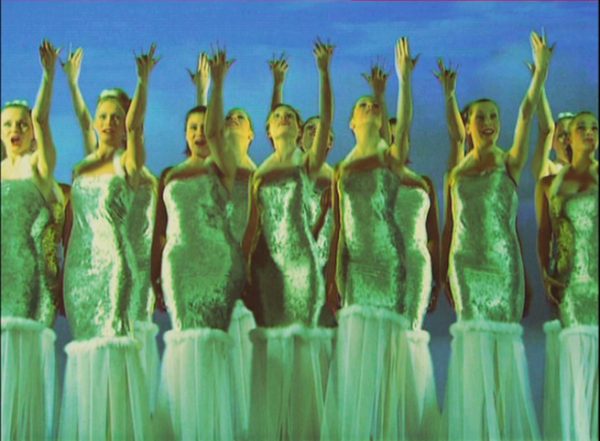 This film has had a bit of a gestation period. It was completed, but not screened, in 2012 with a different score. It was 5 years later that the score was overhauled nad the film was finally completed and subsequently screened at the Sitges film festival. The core idea behind it is to bring to the screen a film that is steeped in the history of cinema in terms of production and the type of story it is telling. Unfortunately it is not entirely successful in either area.
This film has had a bit of a gestation period. It was completed, but not screened, in 2012 with a different score. It was 5 years later that the score was overhauled nad the film was finally completed and subsequently screened at the Sitges film festival. The core idea behind it is to bring to the screen a film that is steeped in the history of cinema in terms of production and the type of story it is telling. Unfortunately it is not entirely successful in either area.
The film is at pains to be as retro as possible. Shot in academy ratio with no dialogue and a full score, it tells the story of a company putting a show on in London’s theatre district. The initial idea is to put on a show that will fail as it will be more profitable for the producers. So they take a poor script. Hire a hack songwriter and put the son of one of the backers into the lead role. What could possibly go right? Once the producers run into financial terms problems they realise they need to make it a hit. So, as well as the main problems we have a murderer knocking off theatre people on a regular basis and the leading man meeting a genie (just go with it!) and wishing for a bigger part.
The film tries really hard to find the feel of the silent period. As well as the ratio and dialogue free choices there are plenty of other factors at play. The film has a purpose made score which runs for the entirety. It works well in conveying the mood and themes as it would have done in an older silent film. There are a couple of songs as well which, good as they are, feel a bit out-of-place. Sound effects are also used extensively which is another nod to the past. It wasn’t uncommon for the effects to be added live in performances to enhance a film. Here it is used well and adds to the production values.
 The film is also graded in such a way to get it to look as if it was actually from the 1920s. Screen pops, debris on the film stock and slight timing issues are all used. It is distracting at first but soon becomes a part of the film. What doesn’t really work is the use of intertitles. In old silent movies, they were used sparingly allowing the on screen action to drive the story. It feels like the film makers didn’t have full confidence in the story and deemed it necessary to add a lot of inter title cards to explain what is going on.
The film is also graded in such a way to get it to look as if it was actually from the 1920s. Screen pops, debris on the film stock and slight timing issues are all used. It is distracting at first but soon becomes a part of the film. What doesn’t really work is the use of intertitles. In old silent movies, they were used sparingly allowing the on screen action to drive the story. It feels like the film makers didn’t have full confidence in the story and deemed it necessary to add a lot of inter title cards to explain what is going on.
It is clear that the writer wanted to make an old style multi layered story with something for everyone. In theory that is fine, but its execution it is just a bit too much. We have the main, putting on the show, aspect that drives the film. The romantic sub plot is a bit wasted in that it just gives the film makers a chance to film in colour for a bit and doesn’t add too much to the overall story. With another two sub plots the movie ends up being crowded. The previously noted genie story line where the principal actor gets exactly what he asked for comes across like something from a carry on film. It isn’t particularly funny to begin with and doesn’t improve as it plays a bigger part in the finale’
A major plus point was the cast. It must have become a real challenge for them to produce the performances they did. Silent film requires a totally unique style of acting with a lot more expression and projection required in the absence of dialogue. Their performances feel authentic and the fact that the film seems to be slightly speeded up, making the scenes appear a little unreal only add to the appreciation of their work.
Overall, a film that works hard to feel authentically retro but doesn’t quite work.
- Hugh Bonneville surprises young patients at Glasgow’s Royal Hospital for Children for MediCinema Screening of Paddington in Peru - November 7, 2024
- Portraits of Dangerous Women – Preview - November 7, 2024
- The Brutalist – Preview - November 6, 2024




